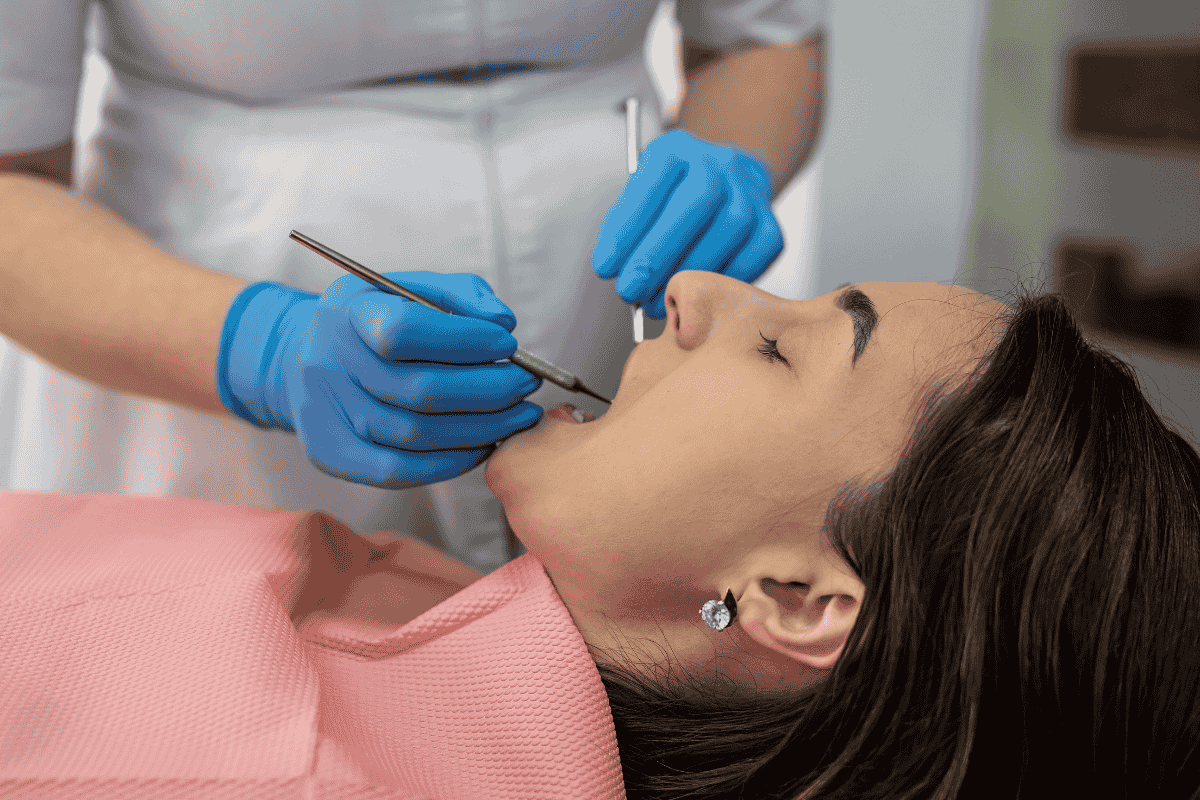
Dental crowns protect and restore damaged teeth. Still, many people ask if cavities can form under them. The crown itself doesn’t decay, but the tooth underneath can still get bacteria and plaque. If not taken care of, this can lead to cavities.
Knowing how decay forms under a crown and what signs to look out for can help prevent major dental problems. In this article, we’ll explain why cavities can form under crowns. We’ll also highlight warning signs to watch for and share the best ways to protect your crowned teeth.
Can a crowned tooth get a cavity?
The short answer is yes, the natural tooth under a crown can still develop cavities. Craftsmen make the crown from strong materials like porcelain, ceramic, or metal. But it doesn't protect the tooth beneath it from bacteria and plaque. If bacteria get under the crown or gather around its edges, decay can form where the crown meets the tooth.
How does decay form under a crown?
Decay under a crown usually develops due to:
- Poor oral hygiene: If you don’t brush and floss enough, plaque can build up at the gum line and around the crown edges. Over time, this can cause decay at the margin of the crown.
- Leaky margins: If a crown fits poorly or loosens, bacteria can get underneath. This can harm the tooth structure.
- Receding gums: Gum recession shows more of the tooth under the crown. This makes it easier for bacteria to cause cavities.
- Old or worn crowns: Crowns that have been in place for years can get small gaps or cracks. This can let bacteria get in.
Signs of decay under a crown
Cavities under a crown can be hard to see. But finding them early is crucial to stop more damage. Decay can often go unnoticed because the crown covers most of the tooth. It can become serious before you realise it. Noticing small changes in your oral health can help you spot issues early. If not treated, decay under a crown can cause infection. This may need more extensive treatment.
Here are some signs that may indicate a cavity beneath a dental crown:
- Tooth sensitivity: If you feel pain when eating hot, cold, or sweet foods, there may be decay beneath the crown.
- Pain or discomfort: A steady ache in the crowned tooth might suggest decay underneath.
- Gum inflammation or bleeding: If your gums are red, swollen, or bleed near the crowned tooth, bacteria may be present.
- Bad breath or unpleasant taste: Persistent bad breath or a strange taste in the mouth could result from bacteria accumulating beneath a loose or ill-fitting crown.
Preventing cavities in crowned teeth
Although crowns offer strong protection, they don’t make teeth immune to cavities. The crown edges and gum line are bacteria-prone, so good oral care is vital. Daily habits and regular dental visits can prevent decay. They also keep your crowned teeth healthy. Taking a bit of extra care now can save you from expensive and painful dental work later.
Follow these key steps to keep cavities at bay:
1. Maintain good oral hygiene.
Brush twice a day with fluoride toothpaste. Floss every day, too. This helps keep bacteria away. Special flossing tools or water flossers can improve cleaning around crowns.
2. Regular dental check-ups
Regular dental visits help your dentist spot signs of decay, loose crowns, or gum problems. Catching these issues early can prevent bigger problems later on.
3. Avoid sugary and acidic foods.
Limiting sugary and acidic foods reduces the chances of plaque buildup and decay. Opt for a balanced diet rich in calcium and fibre to support oral health.
4. Use an antibacterial mouthwash.
An antibacterial mouthwash helps to get rid of bacteria near the crown's edges.
5. Address grinding and clenching.
Wearing a night guard can protect your teeth and crowns if you grind or clench them. It helps prevent wear that can cause tiny openings for bacteria to enter.
What happens if a dentist finds decay under a crown?
If a cavity develops beneath a crown, the dentist will first assess the extent of the decay. In minor cases, the dentist can remove the crown, clean out the decay, and place a new crown. If the decay worsens and impacts a large part of the tooth, a dentist might need to perform a root canal. This can help save the tooth before putting on a new crown.
In severe cases where the tooth structure is too damaged, extraction may be the only option. If this happens, the dentist might suggest a dental implant or a bridge. This can help with both function and appearance. Catching decay early with regular check-ups can stop problems. It also helps to extend the life of your crown and the tooth beneath it.
Summing it up.
To look after your crowned teeth, keep up with good hygiene. Remain vigilant about any changes and schedule regular visits to your dentist. If you feel sensitivity, discomfort, or see signs of decay around your crown, get it checked soon. It’s better to address it before it gets worse.
Early intervention can save both your crown and the tooth beneath it. If you're in NSW, Australia, Local Dental Clinic Deniliquin offers expert care to keep your smile in top shape. Schedule your appointment today!
Go Back

















